|
Singapore
We jumped ship in Singapore ... well, actually we walked down the stairs, the crew schlepped our bags, and
we taxied to our hotel.
It was tough to leave our friends on the ship, but Singapore welcomed
us warmly. In fact, one of the signature features of Singapore --
besides its small size and chewing gum restrictions -- is its friendly,
welcoming citizens. But what most impressed us was its harmonious
diversity ... in people, religons, food, flowers, pretty much
everything. It's Chinese, Indonesian, Malaysian, Thai, Indian, European
.... everything. |
|
|
| Merlion |
"Singapore" means "lion city", but some years ago the city boosters
decided to adopt a manufactured icon for their city, the "merlion,"
which by itself embodies diversity. 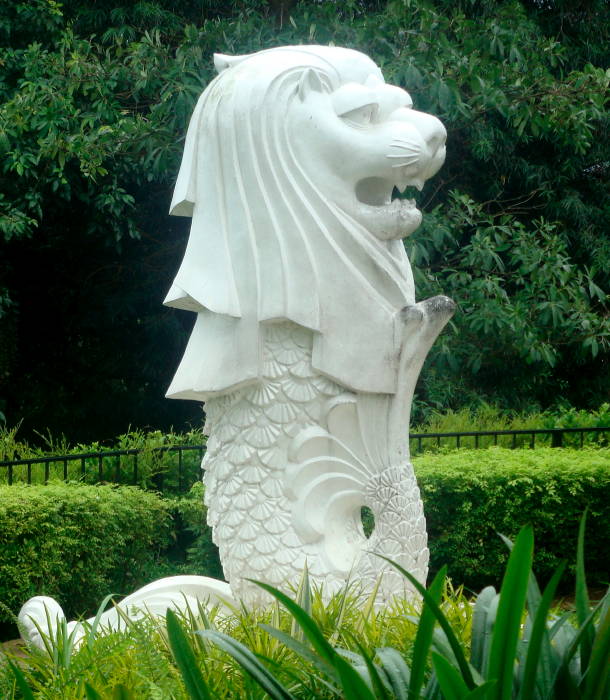
|
|
|
| Flowers |
Singapore doesn't really need Christmas decorations. It has flowers. Being on the equator (1.22° N) gives it a
year 'round tropical environment ... diversity Darwin could love.
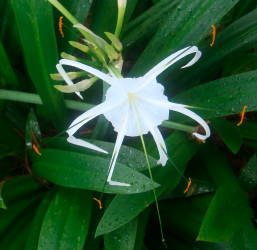 x x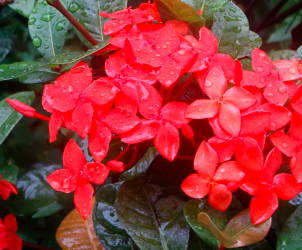
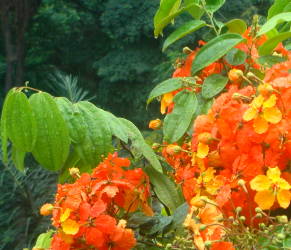 x x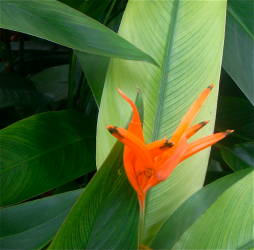
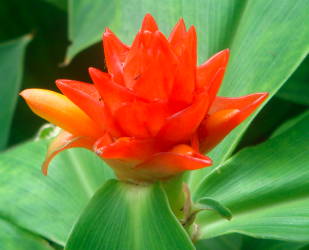 x x
|
|
|
| Neighborhoods |
The city is built from a vast assortment of sizes, colors, shapes and
styles of buildings. High rise public housing accommodates 84% of the
population. As we traveled around the island, the neighborhoods we saw
looked very inviting with beautiful swimming pools, parks, hawker
centers and other amenities. 
Not all of the architecture is new. The Fullerton Building, built in
1919 to celebrate a century of British colonial rule, was once the Post
Office. Now in independent Singapore, it is a hotel. The bridge still
carries the sign prohibiting horses and oxen. 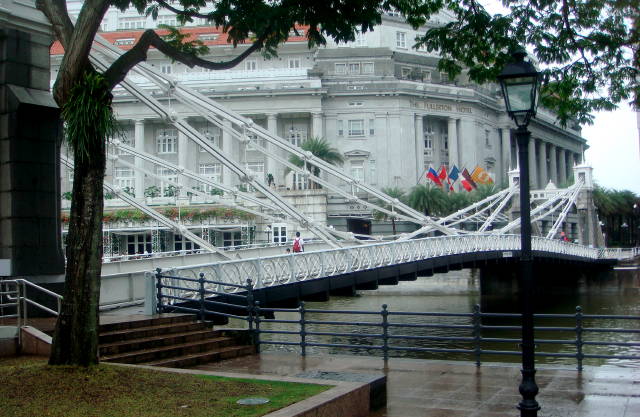
|
|
|
| |
Despite the fact that there are concentrations like Chinatown and
Little India, most of the population lives in mixed communities whose
ethnic balance is preserved by law. 
|
|
|
| Religion |
Census figures indicate that most Singaporans identify with a religion, and here, too, diversity is evident:
Buddhist 42.5%, Muslim 14.9%, Christian 14.6%, Taoist 8.5%, Hindu 4%, other 0.7

|
|
|
| SAM & Art |
We can't speak to the other arts, but the visual arts cover a wide range. There is the Singapore Art
Museum (SAM), but there is a huge amount of public art throughout the city. Some is abstract.

And some is realistic, depicting life in early Singapore. This charming
work of kids going swimming is along the river. 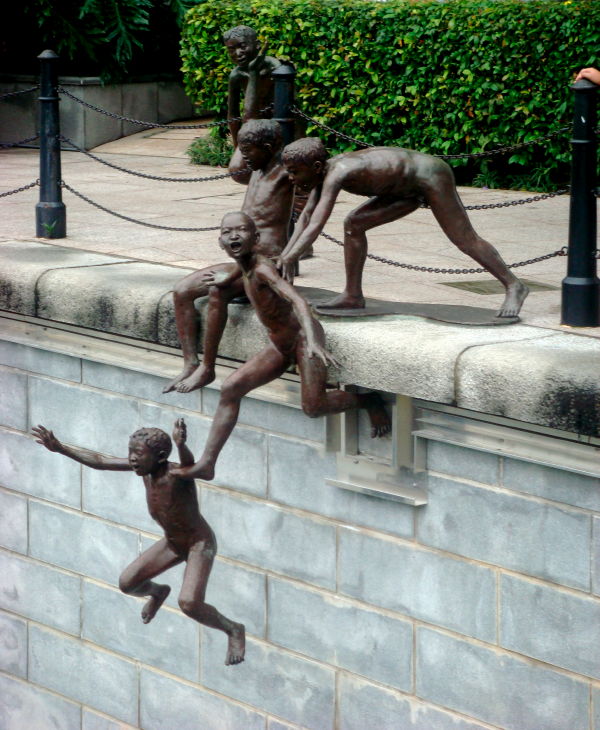
This building, RedDot Traffic, is studio space for working artists, and houses a museum
devoted to bright ideas and design.
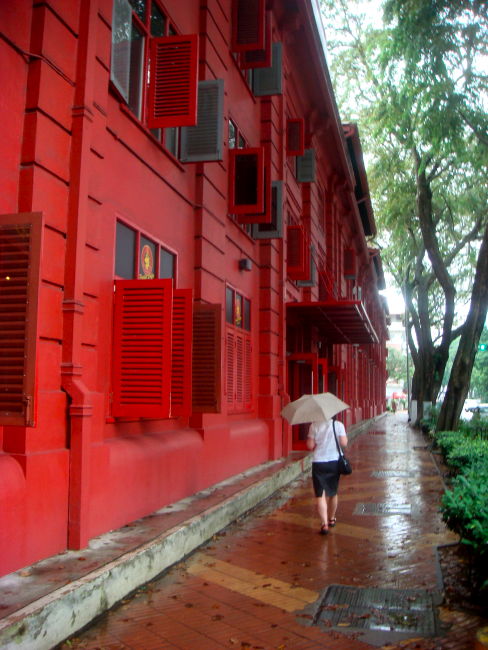
Among the museum's amazing, award winning ideas, our favorite was the
water bottle flashlight (the inventor is Chinese). Shaking the liquid
compresses the plunger, creating electricity that lights the bulb ...
too dim? Shake somemore! Thirsty from shaking? Drink your flashlight.  x x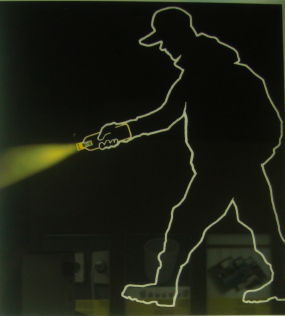
|
|
|
| Eating Out |
Singaporans say -- admittedly it was just one, and she had joined us for lunch --
that Singapore is a City for Eating. We might have been skeptical had it not been that
we were surrounded by great places to eat.
Some were fascinating: The Sakura is a Halal Thai-Chinese place. And all were tasty:
Din Tai Fung, for example, claims to be on the New York Times list of 10 Best Chinese Restaurants in
the World. Their Hot And Sour Soup is proof -- it's better than J's.
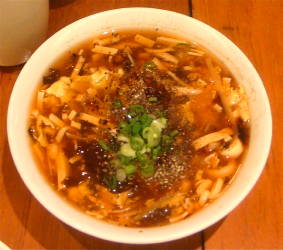
Most famously, there are the hawker
centers. They are covered blocks lined with aisles of street food stalls. But because it's Singapore,
they actually have to meet health standards, making it street food paradise!
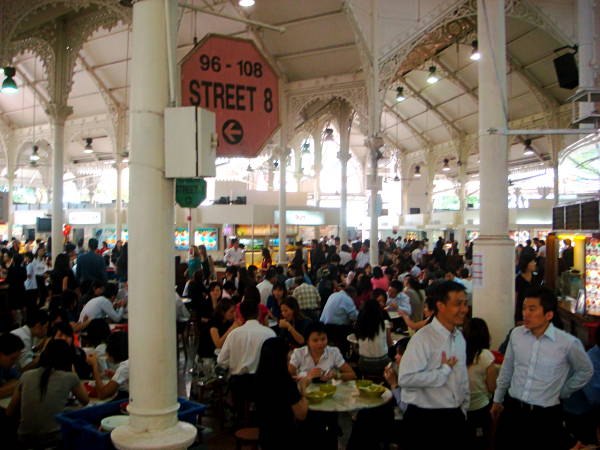
The food ranged from pig organ soup to tuna sushi, and even a burger stand, something for everyone's taste.
A sample of what we had ...
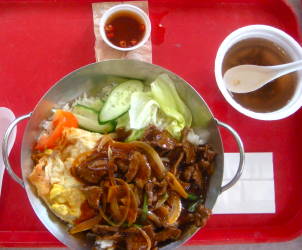 x x
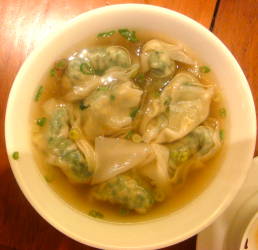 x x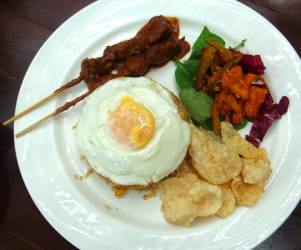
 x x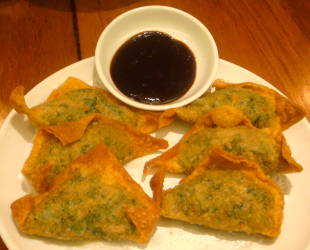
At all hawker centers you share tables with other eaters. Everyone talks to everyone else, and soon you're
finding out who the dude is on the money, and everyone at the table is passing around $50 bills because his
name (Yusof Bin Ishak) is printed in larger font on them. Or maybe
you hear about their kids' preschools and which kid is most interested in art. Eventually, at any hawker center
you realize how much you love Singapore! (despite the Merlion)

|
|
|
| |